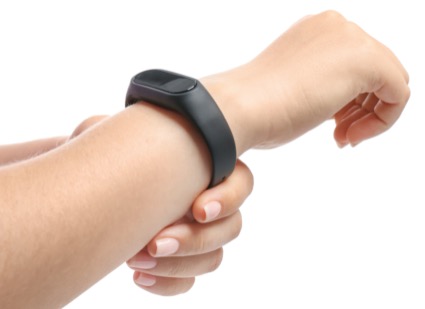Wearable activity monitors may be more reliable and objective than other means of assessing upper limb functioning after breast cancer treatment, and may be able to help patients and their doctors monitor recovery, according to new research.
“This is very original and something we don’t usually think about,” commented Eli Avisar, MD, a professor of surgery at the University of Miami Miller School of Medicine.
To assess the feasibility of WAMs as an objective tool to measure upper limb function after breast and axillary surgery and compare between surgery types, Amalina Bakri, MD, and her colleagues gathered data on patients who wore Axivity (AX3) triaxial accelerometers at least 24 hours preoperatively and up to two weeks postoperatively.
The WAM, which is worn on both wrists, measures upper limb activity in three planes.
“The regain of function was seen through the increase of activity on the operated arm during the post-op period, with the greatest increase between day 1 and 2 and the recovery plateau on day 7,” said Dr. Bakri, a clinical research fellow in breast cancer surgery at Imperial College London, who presented the study at the 2021 virtual meeting of the American Society of Breast Surgeons.
In essence, more surgery was associated with a greater decrease in activity from baseline. Patients who underwent axillary node dissection took longer to reach preoperative activity levels than those who had sentinel lymph node biopsies; the activity levels of patients who underwent deep inferior epigastric perforator decreased to 31% of preoperative levels before returning to 92% by day 13; and those who had a mastectomy experienced a decrease in preoperative activity level to 53% before returning to 78% by day 13.
“Quantifying the morbidity of different treatments may help to track upper limb recovery and help the clinician and patient to choose the most suitable modality, particularly where oncologic outcomes are equivocal,” Dr. Bakri said.
“This information can be used to ensure optimization of patient outcomes by encouraging physical activity and keeping track of personalized activity goals, which could be integrated into the feedback-enabled personalized prehabilitation and rehabilitation care plan.”
Dr. Bakri noted that her research is a feasibility study looking at the acute post-surgery recovery period. She and her colleagues plan to follow up with patients at three, six and nine months to gain a better understanding of how they recover from breast surgery and radiation.
Dr. Avisar said the WAM seems promising and could be an exciting addition to the category of devices being used to track patients in other therapeutic areas, such as cardiac care, diabetes management and physical rehabilitation after knee and hip surgeries.
“This is a concept I suspect we will see more of in the coming years,” Dr. Avisar said.
He also thinks WAMs could be used in a proactive way to reduce the risk for lymphedema. “In general, we have not done much to prevent lymphedema except to do less surgery. We need to learn to refine the surgery and prevent the morbidity of some of these procedures,” Dr. Avisar said. “The WAM could help us monitor patients after surgery, because with early detection lymphedema is reversible and curable.”
This article is from the August 2021 print issue.



Please log in to post a comment